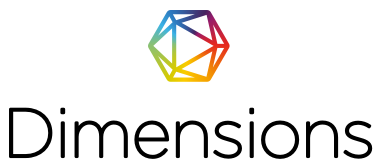Pewarnaan Alami Benang Katun Menggunakan Angkak (Monascus Purpureus)
DOI:
https://doi.org/10.26740/baju.v4n2.p152-161Keywords:
Natural Dyes, Angkak, Yarn, CottonAbstract
Natural dyes can be obtained from plants, animals, minerals, and microorganisms. The microorganism that has the ability to produce pigment is Monascus Purpureus. Angkak, or Monascus purpureus, is the result of the fermentation of rice with the mushroom Monascus Sp. Monascus purpureus mushrooms can produce large amounts of carotenoid pigment, resulting in a red colour. Angkak is often used as a traditional medicine, a food base, and especially as a natural food colourant. However, the knowledge and application of natural dyeing for textiles are still very rare, especially on cotton yarn. This research refers to experimental methods carried out based on data collection in the form of literary studies, trials, observations, and interviews. The process of natural colouring cotton ropes with angkak is carried out in several stages and using several techniques. The natural colouring of the cotton yarn produces varying nude colours. The study resulted in 16 colour variations of 16 combinations of mordant and fixation materials. The results of this study can provide more insight into the natural colouring potential of cotton, thus making it an environmentally friendly and sustainable textile colouring alternative in the textile industry.
Downloads
References
Angraini, F., & Adriani, A. (2021). Perbedaan Mordan Asam Sitrat dan Asam Cuka Terhadap Hasil Pencelupan Bahan Katun Menggunakan Ektrak Ubi Jalar Ungu (Ipomea Batatas). Jurnal Pendidikan, Busana, Seni dan Teknologi, 3(1), 19-25.
Bahari, N., Handayani, R., Santoso, R. E., & Prameswari, N. S. (2020). Mordant And Fixation Test Of Bone Ash On Natural Colours Towards Cotton And Silk Fabric. Fibres and Textiles, 1(4), 8-14
Darmadi, Hamid. (2014). Metode Penelitian Pendidikan. Bandung: Alfabeta.
Enrico, E. (2019). Dampak limbah cair industri tekstil terhadap lingkungan dan aplikasi tehnik eco printing sebagai usaha mengurangi limbah. Moda: The Fashion Journal, 1(1), 1-9.
Gulrajani, M. L., Srivastava, R. C., & Goel, M. (2001). Colour gamut of natural dyes on cotton yarns. Coloration Technology, 117(4), 225-228.
Hartanto, S. (2021). Pewarnaan Alami Dan Sintetis Limbah Sisik Ikan Sebagai Potensi Perhiasan/Aksesoris Mode. Jurnal Da Moda, 2(2), 1-7.
Kant, R. (2011). Textile Dyeing Industry an Environmental Hazard. Natural Science, 4(1), 22-24.
Krause, Jim. (2010). Color index. Ohio: How Books.
Kumar, A., Vishwakarma, H. S., Singh, J., Dwivedi, S., & Kumar, M. (2015). Microbial pigments: production and their applications in various industries. Int. J. Pharm. Chem. Biol. Sci, 5(1), 203-212.
Mauliza, I. N., & Sunendar, B. (2016). Red dyeing silk in room temperature using fermented rice (Oryza sativa) and yam tuber (Pachyrhizus erosus) by Monascus purpureus as an alternatives of an eco-friendly textile dyes. Materials Science and Engineering, 150(1), 1-10.
Nguyen, T., Karl, M., & Santini, A. (2017). Red yeast rice. Foods, 6(3), 19.
Prabhu, K. H., & Bhute, A. S. (2012). Plant based natural dyes and mordants: A Review. J. Nat. Prod. Plant Resour, 2(6), 649-664.
Pujilestari, Titiek. (2015). Review: Sumber dan Pemanfaatan Zat Warna Alam untuk Keperluan Industri. Dinamika Kerajinan dan Batik, 32(2), 93-106.
Simanungkalit, Y. S., & Syamwil, R. (2020). Teknik Ecoprint Dengan Memanfaatkan Limbah Mawar (Rosa Sp.) Pada Kain Katun. Fashion and Fashion Education Journal, 9(2), 90-98.
Sudarma, I. D. G. A., Sastrawidana, I. D. K., & Maryam, S. (2017). Produksi Pigmen Warna Merah dari Jamur Penicillium Purpurogenum yang diisolasi dari Tanah Tercemar Limbah Susu Kambing dengan Metode Submerged Fermentation. Wahana Matematika Dan Sains: Jurnal Matematika, Sains, Dan Pembelajarannya, 11(1), 20-21.
Supandi. (2009). Pengetahuan Tekstil. Bandung: PKK FPKT UPI.
Downloads
Published
How to Cite
Issue
Section
 Abstract views: 270
,
Abstract views: 270
, PDF Downloads: 289
PDF Downloads: 289





.png)


